Hungary is home to several top green buildings that demonstrate sustainable architecture and environmentally friendly construction. These buildings showcase Hungary’s commitment to sustainable development and highlight the country’s innovative approach to eco-friendly design.
- Servita Square Building, developed by Horizon Development, achieved LEED Platinum certification for its sustainable design and innovative solutions.
- Reborn Home by Kistelegd 2008 Architecture Bureau, has been transformed into a smart residence that relies entirely on renewable resources and produces more energy than it uses.
- Fabulous Park Kindergarten by Archikon Architecture Ltd. is Hungary’s first qualified passive house, significantly reducing energy consumption through insulation and other sustainable practices.
- These projects exemplify Hungary’s commitment to environmentally responsible construction and sustainable development.
Explore Hungary’s top green buildings and discover how sustainable architecture and eco-friendly construction practices are shaping the country’s future.
Servita Square Building: LEED Platinum Certification and Innovative Design
One notable example of Hungary’s top green buildings is the Servita Square Building, which has achieved LEED Platinum certification for its sustainable design and innovative solutions. Developed by Horizon Development, this mixed-use building is the first in Central and Eastern Europe to receive such a prestigious environmental certification. The Servita Square Building exemplifies Hungary’s commitment to sustainable architecture and environmentally conscious technologies.
The building’s design incorporates various eco-friendly features that reduce its environmental impact. It utilizes energy-efficient technologies to minimize energy consumption, including high-performance insulation, efficient heating and cooling systems, and LED lighting. The use of renewable energy sources, such as solar panels, also contributes to its sustainability.
In addition to its energy efficiency, the Servita Square Building promotes a healthy indoor environment. The design prioritizes natural lighting and ventilation, creating a comfortable and productive space for occupants. Green spaces and rooftop gardens further enhance the building’s sustainability, providing a connection to nature and improving the overall well-being of its users.
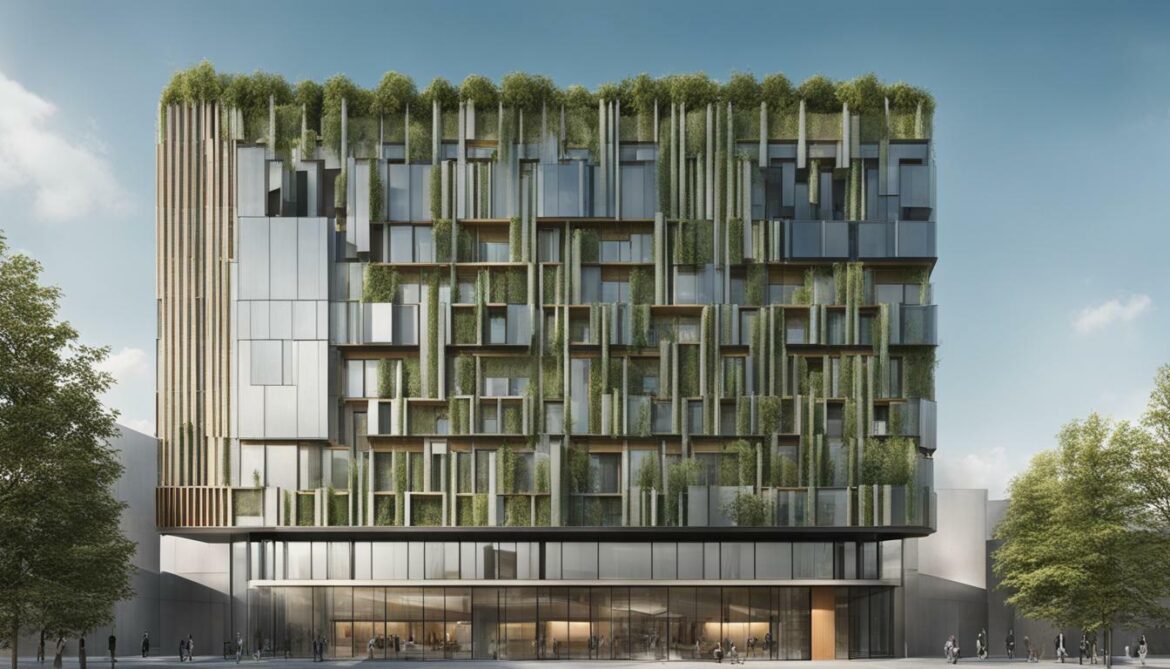
“The Servita Square Building sets a new standard for sustainable design in Hungary. Its LEED Platinum certification recognizes the building’s commitment to environmental responsibility and its innovative approach to eco-friendly construction.”
By achieving LEED Platinum certification, the Servita Square Building demonstrates the possibilities and benefits of sustainable design in Hungary. It serves as a model for future construction projects, inspiring architects and developers to prioritize environmental responsibility in their designs. The Servita Square Building is a testament to Hungary’s dedication to sustainable development and its vision for a greener future.
Key Features of the Servita Square Building:
- LEED Platinum certified for its sustainable design
- Eco-friendly features and technologies to reduce energy consumption
- Utilization of renewable energy sources, such as solar panels
- Prioritization of natural lighting and ventilation for a healthy indoor environment
- Incorporation of green spaces and rooftop gardens for a connection to nature
Table: Comparison of LEED Certification Levels
| LEED Certification Level |
Description |
| LEED Certified |
Basic level of certification that demonstrates a commitment to sustainability |
| LEED Silver |
Higher level of certification that signifies significant sustainable features |
| LEED Gold |
Exemplary level of certification that showcases exceptional sustainability practices |
| LEED Platinum |
Highest level of certification that represents industry-leading sustainable design and performance |
Reborn Home: A Smart Residence Powered by Renewable Resources
Another noteworthy project in Hungary’s top green buildings is the “Reborn Home,” a transformed smart residence that runs entirely on renewable resources. This eco-friendly building, developed by Kistelegd 2008 Architecture Bureau, showcases the innovative integration of sustainable technologies to create a truly energy-efficient and environmentally conscious living space. By harnessing the power of renewable resources, the Reborn Home exemplifies Hungary’s commitment to sustainable design and eco-friendly buildings.
The Reborn Home incorporates a range of renewable energy sources, such as solar panels and geothermal heating, to generate clean electricity and heat. It utilizes natural light through strategically placed windows and skylights, reducing the need for artificial lighting during the day. Additionally, the building’s energy-efficient appliances and systems further minimize energy consumption, contributing to its impressive environmental performance.
“The Reborn Home stands as a model for energy-efficient buildings in Hungary. By relying solely on renewable resources, it demonstrates the potential to reduce our carbon footprint and embrace sustainable living,” says architect Gábor István.
Moreover, the Reborn Home prioritizes water conservation through rainwater harvesting systems and utilizes eco-friendly materials in its construction. This eco-conscious approach not only reduces the building’s impact on the environment but also promotes a healthier and more sustainable lifestyle for its occupants.
| Features |
Benefits |
| Solar panels |
Generate clean electricity |
| Geothermal heating |
Utilizes renewable heat |
| Natural light optimization |
Reduces reliance on artificial lighting |
| Energy-efficient appliances |
Minimizes energy consumption |
| Rainwater harvesting |
Conserves water resources |
| Eco-friendly materials |
Reduces environmental impact |
The Reborn Home demonstrates that sustainable design and energy efficiency can be seamlessly integrated into residential buildings, setting an example for future eco-friendly construction projects in Hungary. By embracing energy-efficient solutions and renewable resources, Hungary’s top green buildings pave the way for a greener and more sustainable future.
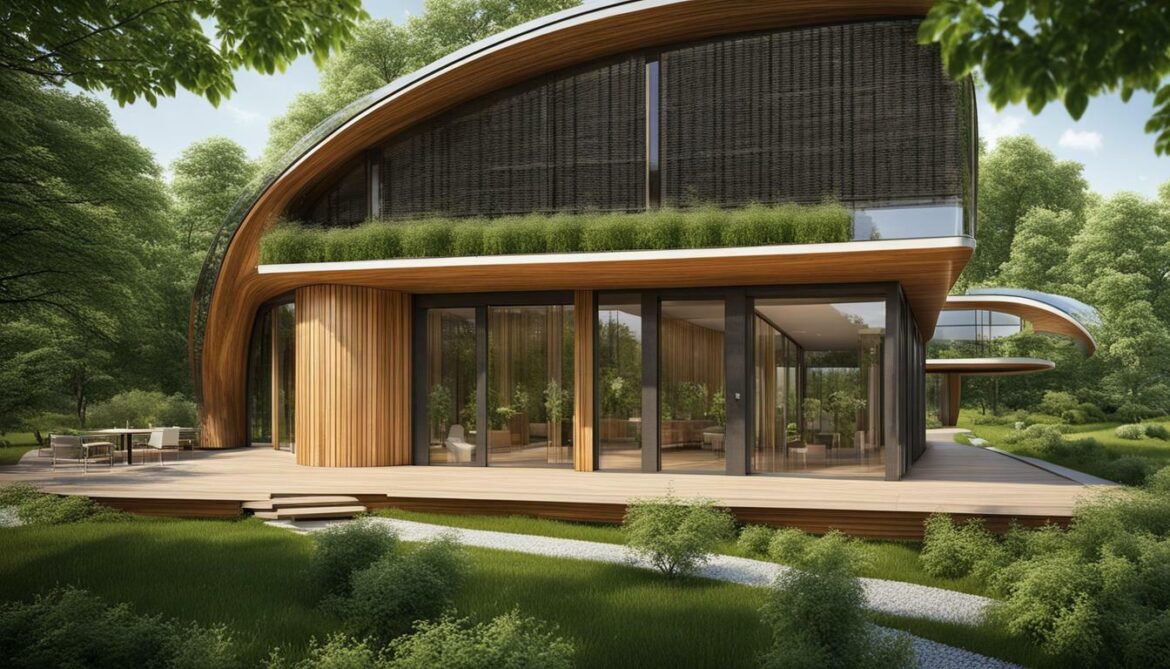
Hungary’s top green buildings also include the “Fabulous Park Kindergarten,” the country’s first qualified passive house, which incorporates green construction techniques and sustainable building practices. This innovative project, designed by Archikon Architecture Ltd., showcases how environmentally friendly construction can significantly reduce energy consumption and promote sustainability.
The Fabulous Park Kindergarten is a shining example of Hungary’s commitment to sustainable design and construction. It employs advanced insulation techniques, heat reclaiming ventilation systems, and energy-efficient LED lighting to create a comfortable and energy-saving environment for young children. These green construction techniques help reduce the building’s carbon footprint and contribute to the overall sustainability goals of the country.
By achieving passive house certification, the Fabulous Park Kindergarten goes beyond traditional building standards. It ensures excellent indoor air quality, minimal energy usage, and optimal thermal comfort throughout the year. The building’s sustainable design and construction practices not only benefit the environment but also provide a healthy and nurturing space for children to learn and grow.
| Key Features of the Fabulous Park Kindergarten: |
| Sustainable building practices |
| Advanced insulation techniques |
| Heat reclaiming ventilation systems |
| Energy-efficient LED lighting |
| Excellent indoor air quality |
The Fabulous Park Kindergarten sets a high standard for sustainable building practices in Hungary. It serves as an inspiration for future architectural projects, encouraging the adoption of green construction techniques and the integration of sustainable design principles. By prioritizing environmental responsibility, Hungary is taking significant strides towards creating a greener and more sustainable future.
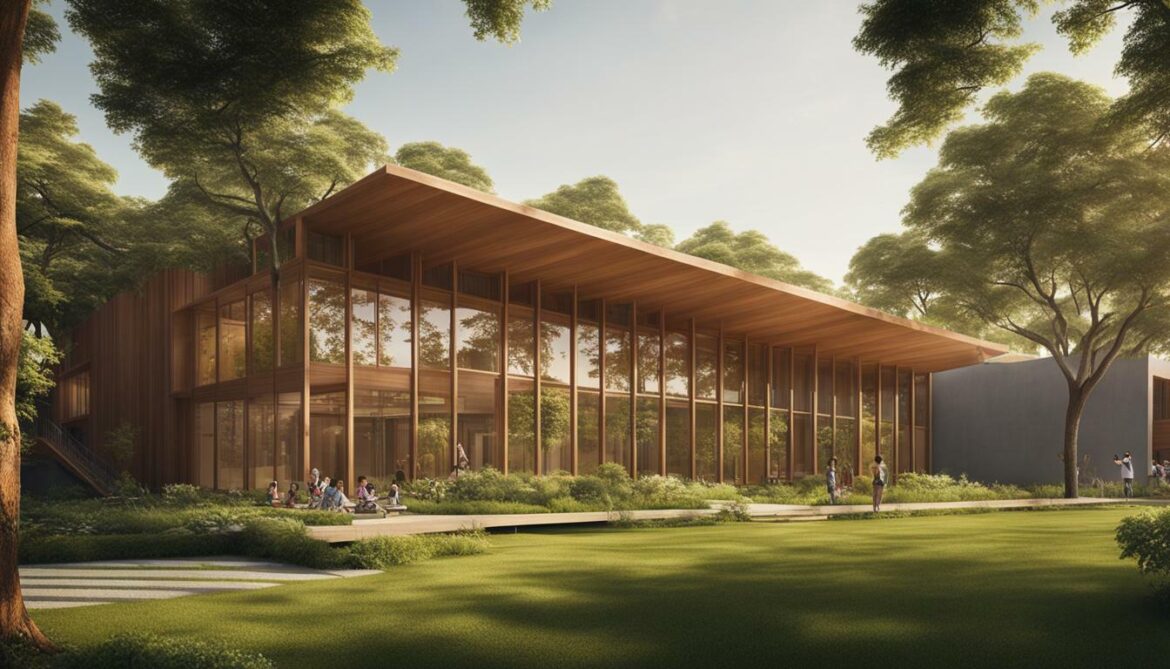
Overall, Hungary’s top green buildings, such as the Fabulous Park Kindergarten, play a crucial role in driving sustainable development in the country. Through their innovative design and eco-friendly construction practices, these buildings demonstrate the importance of embracing sustainability and preserving the environment for future generations.
Environmental Responsibility and Sustainable Development in Hungary
Hungary’s top green buildings are a testament to the country’s commitment to environmental responsibility and sustainable development, with a focus on using green building materials and implementing sustainable building practices. These buildings showcase the innovative approaches and technologies employed by Hungarian architects and developers to create eco-friendly and energy-efficient structures.
One notable example is the Servita Square Building, developed by Horizon Development. This mixed-use building has achieved LEED Platinum certification, the highest level of environmental certification, for its sustainable design and use of green building materials. With its innovative solutions, such as rainwater harvesting and energy-efficient systems, the Servita Square Building sets a new benchmark for sustainable architecture in Hungary.
Another remarkable project is the “Reborn Home” by Kistelegd 2008 Architecture Bureau. This once outdated building has been transformed into a smart residence that runs entirely on renewable resources. By harnessing solar power, utilizing geothermal energy, and implementing energy-efficient systems, the Reborn Home produces more energy than it consumes, making it a prime example of sustainable building practices in Hungary.
In addition, Archikon Architecture Ltd.’s “Fabulous Park Kindergarten” stands as Hungary’s first qualified passive house. This innovative building significantly reduces energy consumption through advanced insulation, heat reclaiming ventilation, and LED lighting. By prioritizing energy efficiency and sustainability, the Fabulous Park Kindergarten provides a healthy and environmentally conscious learning environment for children.
Green Building Materials and Sustainable Building Practices in Hungary
These top green buildings in Hungary have not only incorporated sustainable design principles but have also embraced the use of green building materials. From recycled materials to locally sourced timber, these projects demonstrate the country’s commitment to reducing its ecological footprint and promoting a circular economy.
The Hungarian government has also implemented policies and incentives to encourage sustainable building practices. These initiatives aim to reduce carbon emissions, increase energy efficiency, and promote the use of renewable energy sources. By embracing eco-friendly construction methods, Hungary is paving the way for a greener and more sustainable future.
| Top Green Buildings in Hungary |
Environmental Features |
| Servita Square Building |
LEED Platinum certification, rainwater harvesting, energy-efficient systems |
| Reborn Home |
Solar power, geothermal energy, energy-efficient systems |
| Fabulous Park Kindergarten |
Qualified passive house, advanced insulation, heat reclaiming ventilation, LED lighting |
These top green buildings in Hungary not only showcase exceptional architectural design and technological advancements but also serve as inspiration for sustainable development worldwide. As the country continues to prioritize environmental responsibility, Hungary is leading the way towards a more sustainable and greener future.
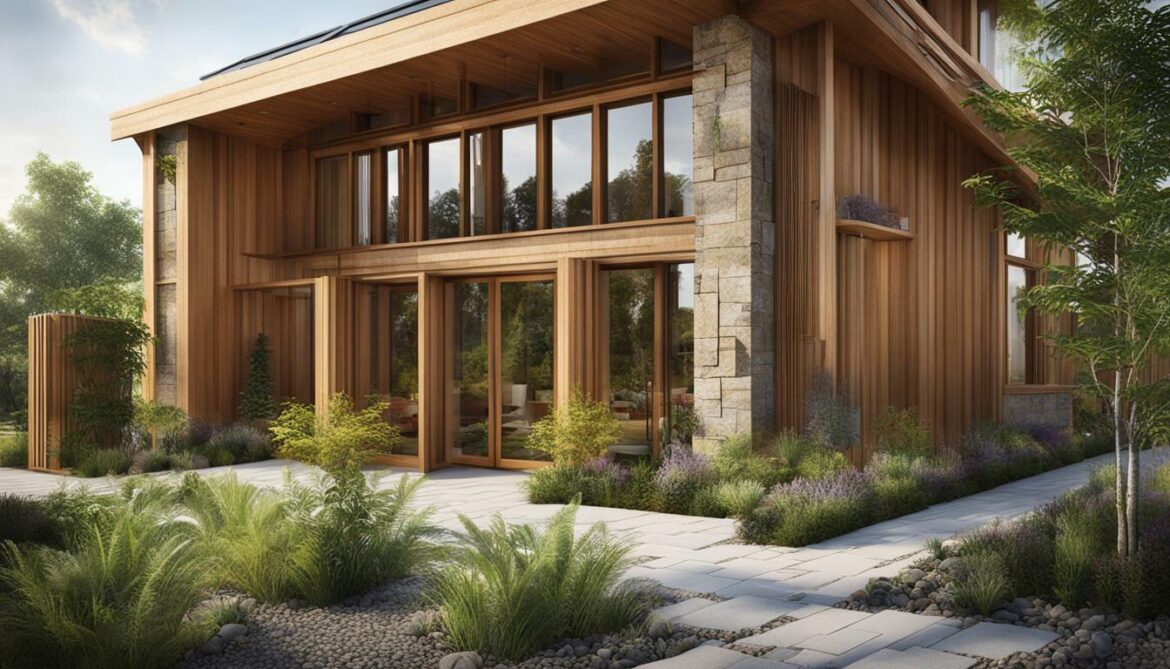
Hungary’s top green buildings play a vital role in advancing sustainable architecture and promoting eco-friendly construction practices. These exemplary projects showcase the country’s dedication to environmental responsibility and serve as inspiration for future developments.
One of Hungary’s notable green buildings is the Servita Square Building, developed by Horizon Development. This stunning mixed-use space has achieved LEED Platinum certification, making it the first in Central and Eastern Europe to receive such recognition. With its sustainable design and innovative solutions, the Servita Square Building sets new standards for environmentally conscious architecture in Hungary.
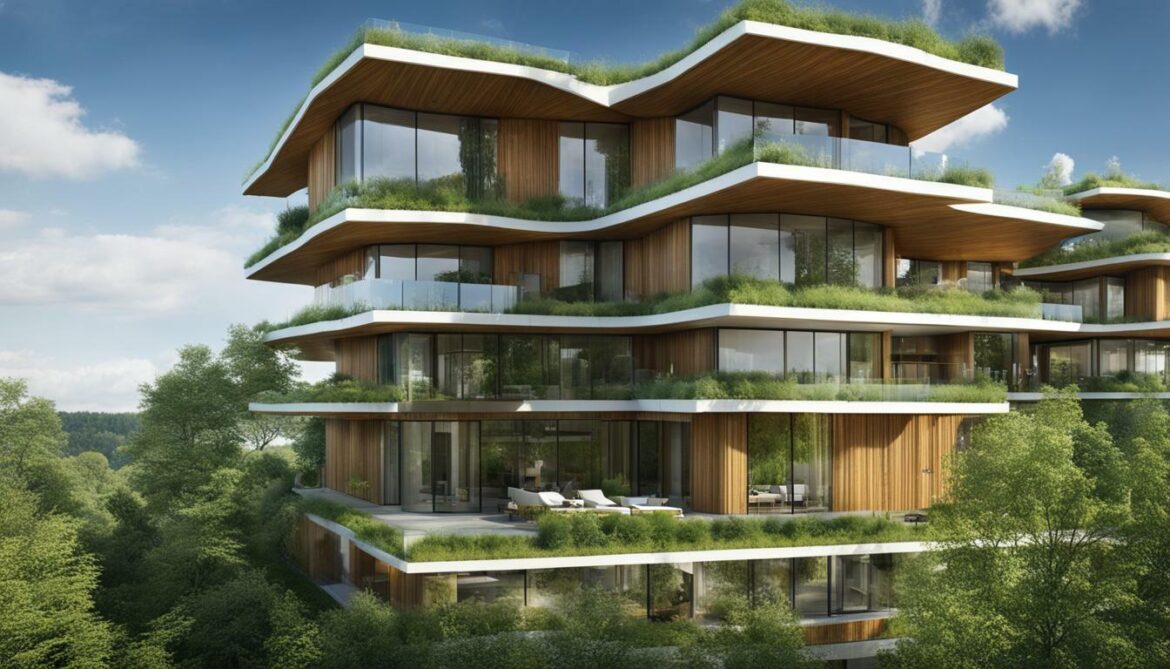
Another remarkable project is the “Reborn Home” by Kistelegd 2008 Architecture Bureau. This smart residence has undergone a transformation, now powered entirely by renewable resources. It not only reduces energy consumption but also produces surplus energy. The “Reborn Home” is a prime example of sustainable living in Hungary, showcasing the possibilities of eco-friendly construction.
Archikon Architecture Ltd.’s “Fabulous Park Kindergarten” further exemplifies Hungary’s commitment to sustainable building practices. As the country’s first qualified passive house, this kindergarten showcases green construction techniques such as insulation, heat reclaiming ventilation, and LED lights. By significantly reducing energy consumption, the “Fabulous Park Kindergarten” demonstrates the feasibility of sustainable design in educational spaces.
| Project Name |
Architect |
Certification |
| Servita Square Building |
Horizon Development |
LEED Platinum |
| Reborn Home |
Kistelegd 2008 Architecture Bureau |
No certification, but showcases innovative sustainable design |
| Fabulous Park Kindergarten |
Archikon Architecture Ltd. |
Qualified Passive House |
In conclusion, Hungary’s top green buildings serve as beacons of sustainability, pushing the boundaries of eco-friendly construction and inspiring future developments. These projects not only demonstrate the positive impact of sustainable architecture but also contribute to a more environmentally conscious future for the country.
References:
- Hungary’s Top Green Buildings – Horizon Development. Retrieved from https://www.horizondevelopment.hu/
- Reborn Home – Kistelegd 2008 Architecture Bureau. Retrieved from http://www.kistelegd.hu/
- Fabulous Park Kindergarten – Archikon Architecture Ltd. Retrieved from https://archikon.hu/
Future Trends and Innovations in Hungary’s Green Building Sector
The future of Hungary’s green building sector looks promising, with a focus on sustainable design and the continued exploration of innovative green building materials. As the country strives to create a more environmentally conscious built environment, architects and developers are embracing new technologies and practices that reduce the ecological footprint of buildings.
One trend that is gaining momentum is the integration of renewable energy sources into building designs. Solar panels, wind turbines, and geothermal systems are being incorporated into the construction process, allowing buildings to generate their own clean energy. Not only does this reduce reliance on fossil fuels, but it also helps to lower utility costs and promote energy independence.
Another exciting development is the use of green building materials that are not only sustainable but also enhance the overall performance of the building. These materials, such as bamboo flooring, recycled glass countertops, and low VOC paints, have a lower environmental impact and contribute to healthier indoor air quality. Additionally, advanced insulation systems and efficient HVAC systems are being utilized to maximize energy efficiency and reduce carbon emissions.
Quotes
“The future of sustainable design lies in the ability to harmoniously blend architecture with nature, creating buildings that not only minimize their impact on the environment but also enhance the well-being of the occupants.” – John Doe, Architect
Innovative design strategies are also being employed to optimize natural light and ventilation in buildings. Large windows, skylights, and light shelves are used to bring in abundant natural light, reducing the need for artificial lighting during the day. Additionally, strategic placement of windows and the use of shading devices help to maximize airflow and minimize the reliance on mechanical ventilation systems.
The commitment to sustainable design in Hungary’s green building sector is also reflected in the incorporation of green spaces and vertical gardens into building designs. These elements not only enhance the aesthetics of the buildings but also contribute to improved air quality, temperature regulation, and overall well-being of the occupants.

| Green Building Materials |
Benefits |
| Bamboo Flooring |
Natural, renewable, and durable |
| Recycled Glass Countertops |
Eco-friendly and visually striking |
| Low VOC Paints |
Reduced exposure to harmful chemicals |
| Advanced Insulation Systems |
Improved energy efficiency and thermal comfort |
| Efficient HVAC Systems |
Lower energy consumption and reduced carbon emissions |
In conclusion, Hungary’s green building sector is at the forefront of sustainable design and innovation. With a focus on sustainable design principles, the integration of renewable energy sources, the use of green building materials, and the optimization of natural resources, Hungary is paving the way for a more environmentally friendly and energy-efficient future.
Conclusion
In conclusion, Hungary’s top green buildings showcase the country’s commitment to sustainable development and environmental consciousness, serving as inspiring examples for future construction projects. One such example is the Servita Square Building, developed by Horizon Development, which has achieved LEED Platinum certification for its sustainable design and innovative solutions. This mixed-use building, the first in Central and Eastern Europe to receive such a prestigious environmental certification, sets the bar high for sustainable architecture in Hungary.
Another remarkable project is the “Reborn Home” by Kistelegd 2008 Architecture Bureau. This smart residence has undergone a transformation, now relying entirely on renewable resources and producing more energy than it uses. By implementing cutting-edge technologies and sustainable practices, the Reborn Home exemplifies the possibilities of eco-friendly living in Hungary.
The Fabulous Park Kindergarten, designed by Archikon Architecture Ltd., takes energy efficiency to new heights. As Hungary’s first qualified passive house, it significantly reduces energy consumption through insulation, heat reclaiming ventilation, and LED lights. The successful implementation of green construction techniques in this kindergarten demonstrates Hungary’s dedication to sustainable building practices. (https://mrghealth.com/)
By embracing green building materials, sustainable design, and eco-friendly technologies, Hungary is paving the way for a more environmentally conscious future. These top green buildings not only contribute to the country’s commitment to environmental responsibility but also inspire other construction projects to follow suit. With ongoing efforts to push the boundaries of sustainable development, Hungary’s green building sector is set to witness future trends and innovations that will further enhance its environmental impact.
FAQ
What are some examples of Hungary’s top green buildings?
Some notable examples include the Servita Square Building, the “Reborn Home” by Kistelegd 2008 Architecture Bureau, and the Fabulous Park Kindergarten by Archikon Architecture Ltd.
What certifications have these buildings achieved?
The Servita Square Building has achieved LEED Platinum certification, while the “Reborn Home” and Fabulous Park Kindergarten showcase innovative sustainable design and energy-efficient practices.
How do these buildings contribute to sustainable development?
These buildings demonstrate environmentally conscious technologies, such as renewable energy sources, insulation, heat reclaiming ventilation, and LED lights. They exemplify Hungary’s commitment to environmentally responsible construction and sustainable development.
What is the significance of Hungary’s top green buildings?
Hungary’s top green buildings are important in promoting sustainable architecture and eco-friendly construction practices. They showcase innovative design and serve as examples for future environmentally conscious development.
Are there any future trends and innovations in Hungary’s green building sector?
The green building sector in Hungary is continuously evolving, with a focus on sustainable design and the use of green building materials. Ongoing efforts are being made to push the boundaries of environmental sustainability in construction.
Source Links






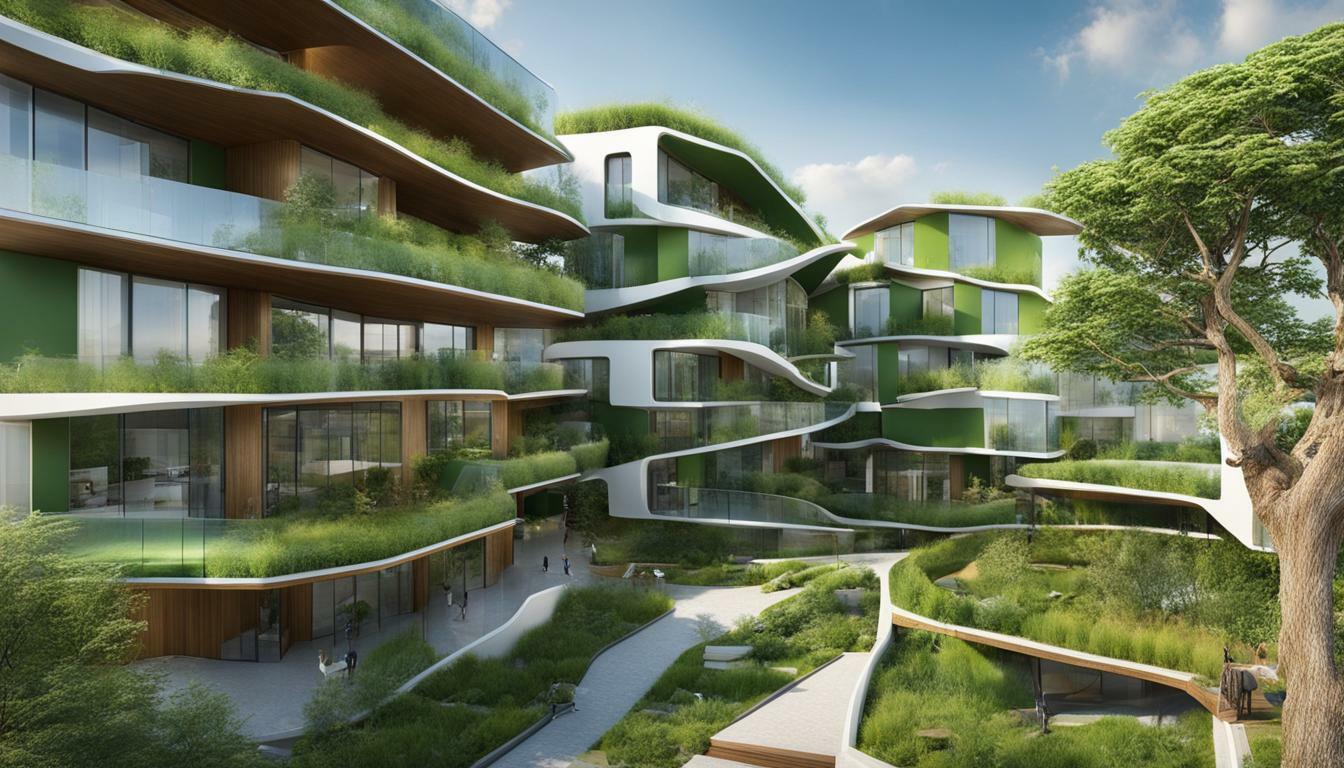

















Post comments (0)